




 |
 |
 |
 |
 |
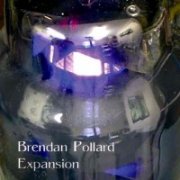 |
Expansion (2005, 60.57) ****/TTTTTegulaToxic Blue Nebulous Valve Aquarius |
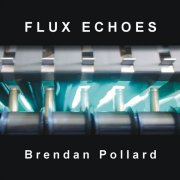 |
Flux Echoes (2007, 73.28) ****/TTTTFlux EchoesRadiant Transmission Phosphor Skyline Torque |
Current availability:
Mellotrons used:
Brendan Pollard was one half of UK EM duo Rogue Element (below), Expansion being his first solo project, surprisingly after only one Rogue Element album, Premonition. It has a lot in common with said album, although it lacks its Froeseish guitar work, but otherwise sticks fairly closely to the standard 'Berlin School' template of drones, sequencer lines and shitloads of Mellotron. Yes, it's real, with 'various tape frames' being credited in the CD booklet, although I could only actually spot five specific sounds myself. You may ask yourself (or you may not, given that you're already reading the contents of this site), "What the fuck does it matter whether or not the Mellotron's real?". I'll tell you why it matters: it's to do with the way a musician plays a sound. Piano samples, especially when played on a lightweight synth keyboard, never sound right and nor do infinite-sustain Mellotron samples with velocity sensitivity (thanks, Roland). That's like pitchbending a piano, or playing eight-note chords on a guitar; good trick if you can do it, but nothing to do with the way the instrument was intended to be played. OK, I'm sure Harry Chamberlin and Les Bradley would've liked to've made an infinitely sustaining Chamberlin or Mellotron, but they didn't and hearing one that does is just... wrong. So there.
Er, anyway... The album's Mellotron work begins with a full-on choir part a few minutes into Tegula, with flutes, phased strings and even brass thrown into the mix later on. Toxic Blue pretty much opens with an extremely upfront flute part, throwing cellos into the equation further down the line (listen to that raucous double bass note!), while the rest of the album sticks more to the tried'n'tested strings and flutes, although there may well be sound effects (Rogue Element own at least one ex-Tangs frame) here and there as well. So; a good, solid EM release, sounding all the better for its considerable analogue input. As ever with this genre, I'm not the best-qualified person to review it, but as with the Rogue Element album, this will be put on when I need to kick back and drift off. Organic, well thought-out EM. Buy.
Two years on and Brendan's second album drops onto my doormat, completely unheralded. So what's happened to Rogue Element? They're beginning to look like the Tangs' longevity is not for them, though I may yet be proven wrong, hopefully. Flux Echoes is, unsurprisingly, another Berlin School album, with all the usual reference points; y'know, you either like this stuff or you don't - half measures don't count. It does all the right things in all the right places, although some of you may find what is effectively a double albums'-worth to be a little too much of a good thing. Blame the CD revolution. Anyway, shedloads of Mellotron, with the sounds listed this time. (Deep breath):
The obvious ones are the standard 3 violins (generic 'strings'), the cellos, brass, flutes and both choirs, though the other three string sounds must be in there somewhere. Thinking about it, the mixed violin/cello is probably on the title track. Not sure about the oboes and sound effects, but given that they'll be their ex-Tangs frame, they could be almost anything; certainly not restricted to the 'standard' set I've spotted on a few things. Sensibly, Brendan and Adrian Dolente don't over-use them (they have two M400s), as overkill is easy, particularly with the strings (otherwise known as 'how to spot samples'). None of that here, which is always to be applauded, but when you have at least four tape frames, that really shouldn't be too difficult. So; once again, a Mellotron-heavy EM album for everyone who mourns the day Tangerine Dream got rid of theirs, me included. This beats the crap out of most digital Euro-EM, featuring people who not only can play their instruments, but have to, as most of it is pre-MIDI and even the sequencing is pseudo-analogue (spot the Doepfer). As with its predecessor, this is a pretty essential album. Buy.
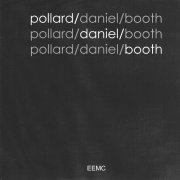 |
Pollard/Daniel/Booth (2009, 66.46) ***½/TT½EnvelopesSkaters Ladders |
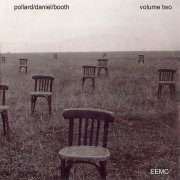 |
Volume 2 (2010, 73.27) ***½/TTTHampshire 1Hampshire 2 Hampshire 3 Hampshire 4 Hampshire 5 |
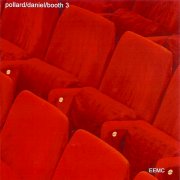 |
3 (2010, 77.29) ***½/TTTEindhoven IEindhoven II Eindhoven III |
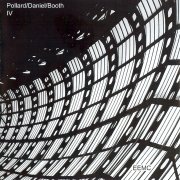 |
4 (2010, 74.09) ***½/TTTAlpha PrimitivesStreams Hashra Simpel |
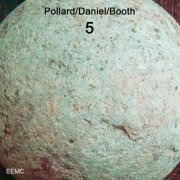 |
5 (2013, 70.19) ***½/TTTSphere of Influence ISphere of Influence II Sphere of Influence III Eindhoven IV |
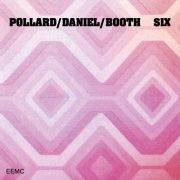 |
Six (2013, 73.19) ***/TTA Space Cadet's Night in (Level 5)Super Roller Last One Out |
Current availability:
Mellotron used:
In 2009, Brendan Pollard combined his talents with those of Michael Daniel and Phil Booth for a series of limited-edition releases in the expected Berlin School EM style. 2009's Pollard/Daniel/Booth, recorded live with no overdubs, does exactly what you'd expect, with aplomb, I have to say, probably at its best on half-hour opener Envelopes, which spends half its length in Mellotron-flute-over-drifting-synth semi-ambient territory, before the expected sequencer lines kick in. More flutes, cellos and strings, with similar on Skaters and just a flute line on Ladders. The following year's Volume 2 archives the previous year's set at the 8th Hampshire Jam, featuring three special guests in the forms of Jerome Ramsey, Ruud Heij and Marcel Engels. Pollard's addition of two new faces, as with his Free System Projekt/Hashtronaut releases, pulls him out of his comfort zone, the album's most startling piece being closer Hampshire 5, featuring heavily-delayed guitar underlaid with the mellow end of the Mellotron string spectrum. Mellotron (both of Pollard's machines are pictured inside the disc insert) on every track, unsurprisingly, from Pollard and Ramsey, other notable parts being the flute and male choir sections early on and brass about ten minutes into Hampshire 1 and a major string presence on Hampshire 3.
3 was recorded at 2009's E-Live, at Eindhoven, although since their main set was almost eighty minutes, their encore has been left off to avoid 'expensive two-disc set' syndrome. As with so much EM, the differences between one set and another are relatively small, in the grand scheme of things, making this a perfectly acceptable release that does nothing to startle the listener. Just Pollard on Mellotron this time, with what sounds like string section and a major choir part on Eindhoven I, with flutes, brass and regular strings elsewhere, making me think that Brendan had both of his M400s there. 4's forty-minute opener, Alpha Primitives, is probably the most adventurous track on this whole series of albums, heading into darker ambient and proto-world music territories, although it levels off into more standard EM about half-way through, the other two pieces being more 'normal', or what passes for it in the closeted world of the Berlin School. We're some minutes into opener Alpha Primitives before the Mellotron(s) appear, with male choir and brass, other album highlights being the major flute parts and the string section to be heard on Streams. Unusually, closer Hashra Simpel (ho ho) features next to no Mellotron at all, with nowt but some muted, phased choir towards the end.
2013's 5 was mostly recorded at the band's rehearsal space, although, unsurprisingly, Eindhoven IV is live. Mellotron all round, with chordal strings and a flute solo towards the end of Sphere Of Influence I, another flute solo and chordal choirs on Sphere Of Influence II, pitchbent choirs and more of those flutes on (you guessed it) Sphere Of Influence III and chordal choirs on Eindhoven IV, with a little burst of volume-pedalled strings at the end. The same year's Six seems somehow less involved; maybe it's me. Anyway, distant Mellotron strings and choirs on A Space Cadet's Night In (Level 5), not to mention yet another flute solo, very little on Super Roller, just some pitchbent choirs towards the end, with more choirs and... a flute solo on Last One Out. And is it just me, or do the choirs sound somewhat inauthentic? Not as inauthentic as on Volume 7, mind, which is why it isn't here.
Overall, these are essentially typical EM releases, making it difficult to recommend them to anyone not already immersed in the style. However, if this is your chief listening pleasure, all three of these will definitely float your boat, loaded with genuine analogue textures, rather than the 'yeah, samples will do' approach utilised by so many practitioners. Incidentally, 4 is also available as a DVD; review forthcoming.
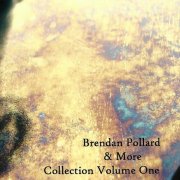 |
Collection Volume One (2013, 76.11) ***/TTT |
|
| The Beast Sings...... Modac Thoughts for Dead Leaf Motion Radio ID Space Junk One Improvisation for Mellotron and Steel Guitar Radio ID One One Evening in May The Neon Chamber |
Radio ID Two Flux Rehearsal Section Radio ID Xmas One Tropic |
|
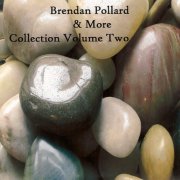 |
Collection Volume Two (2013, 76.29) ***/TTT |
|
| Solenoid A Different Sky Radio ID Three Improvisation for Mellotron and Guitar E-Live Rehearsal Radio ID Space Junk Two Aqueous Portal Radio ID Xmas Two |
Mellowtronthoughts Radio ID Four The Redwood Trail |
|
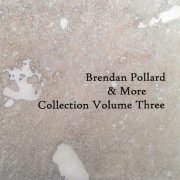 |
Collection Volume Three (2013, 70.12) ***/TT½Space JunkGods and Diodes Radio ID Five Improvisation for Rhodes and Guitar Analogue Satourn Radio ID Six One Evening in May Part Two Radiant Transmission Live Segment Radio ID Seven |
Current availability:
Mellotrons used:
In 2013, three volumes of Brendan's Collection series appeared, mopping up odds and ends from his recording career, making for a slightly disjointed listening experience for the casual listener and EM gold for the committed fan. Tracks from compilations (various volumes of Awakenings, E-Dition, To the Sky & Beyond the Stars and the like), original versions, unreleased material and a clutch of (necessarily) brief, slightly odd radio promos are thrown together, cheek by jowl, the more unlikely tracks (yes, those radio promos) being scattered amongst the more 'typical' fare.
Volume One is probably at its best on the twenty-five-minute Thoughts For Dead Leaf Motion, perhaps surprisingly. Mucho Mellotron, with flute and string parts on Modac, strings and a flute line on Thoughts For Dead Leaf Motion, flutes on Improvisation For Mellotron And Steel Guitar, choirs on the brief Radio IDs One and Two, cellos and pitchbent choirs on One Evening In May, volume-pedalled strings, cellos and flutes on The Neon Chamber, flutes on Flux Rehearsal Section and Radio ID Xmas One and flutes and choirs on closer Tropic.
Volume Two is, frankly, more of the same, but lacking Thoughts For Dead Leaf Motion's intensity. Plenty of Mellotron, of course, with lush string swells and a repeating flute line on opener Solenoid, sweeping, background strings on A Different Sky, echoed flutes, a chordal wash and a cello line on Improvisation For Mellotron And Guitar, choirs, flutes and string swells on E-Live Rehearsal, flutes on Radio ID Space Junk Two, choir notes on Aqueous Portal, an upfront flute line on Mellowtronthoughts, cello and flute lines on Radio ID Four and strings, morphing into flutes, on closer The Redwood Trail.
Volume Three isn't dissimilar to Two, with no obvious standout tracks. Mellotron on most (big surprise), with choirs, strings and flutes on opener Space Junk, Gods And Diodes is a piece for solo strings, warbly flutes on Analogue Satourn, volume-pedalled choirs and flutes on One Evening In May Part Two, occasional choirs on Radiant Transmission Live Segment and, finally, flutes on closer Radio ID Seven. The interesting thing, Mellotronically speaking, about all of these releases is how little the Mellotron is actually used, in the grand scheme of things. A short burst of choirs, a solo flute part, a strings wash, never for very long, but usually very effective. All of these are available from Brendan's Bandcamp page.
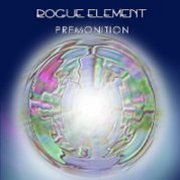 |
Premonition (2004, 67.57) ****/TTTT½Beyond CerberusTropospheric Propogation Rainbow Runner Falls the Shadow |
Current availability:
Mellotrons used:
Rogue Element are a new UK electronic duo comprising Jerome Ramsey (keys) and Brendan Pollard (er, keys). The proud owners of two Mellotrons, it's hardly surprising that they're splattered all over their debut, Premonition, along with a raft of other gear, both analogue and digital, the highlights of which are an ARP Odyssey, a Solina string synth and some modular equipment. Of course, the question to which you all want the answer is... do they sound like Tangerine Dream? Of COURSE they sound like Tangerine Dream, but don't let that put you off; most EM seems to sound like either the Tangs or Klaus Schulze anyway, the chief criteria being "do they do it well?" Well, I can report back to say, "Yes!", they do it excellently, thank you very much. As with all genres of the past, there's very little left to say in this kind of music, but if you can come away from the album saying "I enjoyed that", I'd say that's worth a hundred experimental outfits all producing wank of the highest order. But then, I would.
Yes, it's 'Berlin School'. Yes, each piece starts with a drone section before the step sequencer kicks in. Yes, there's a little distorted guitar lead. No, I don't care that it's all been done before. From what I've heard, Rogue Element are up there with r.m.i. in the UK electronica stakes; apologies to the other current British outfits I haven't heard. Of course, it helps that both bands a) use Mellotrons and b) seem to use very little computer equipment; I was bored to tears by some Euro EM bunch a few years ago who just stood in front of linked PCs playing digital synths along to some pre-programmed rubbish, assuming they were actually playing at all. Organic would seem to be the watchword and the only way to achieve that is to actually play your bloody instruments in real time. You try sequencing a Mellotron. Yeah, there's loads of sequenced parts on this album, but it's all a million miles away from the kind of programmed dreck that clogs up the racks and gives the genre a bad name. Er, rant over. Anyway, it's difficult to pick out particular Mellotronic highlights here, although the heavy strings presence followed by a marvellous polyphonic flute part in the middle of Falls The Shadow may qualify.
As for the album's Mellotron use, well, how much more Mellotron could you desire? OK, they resist the temptation to play the things non-stop, but every track features dirty great slabs of the things, not only strings, choir and flutes, but brass (don't know which) and, I'm told, some original Tangs sound effects tapes (r.m.i. own at least one original Tangs frame, too). All in all, a Mellotron-lover's delight and one of the better electronic albums I've heard in quite some time. Buy.
See: Free System Projekt/Brendan Pollard/Hashtronaut